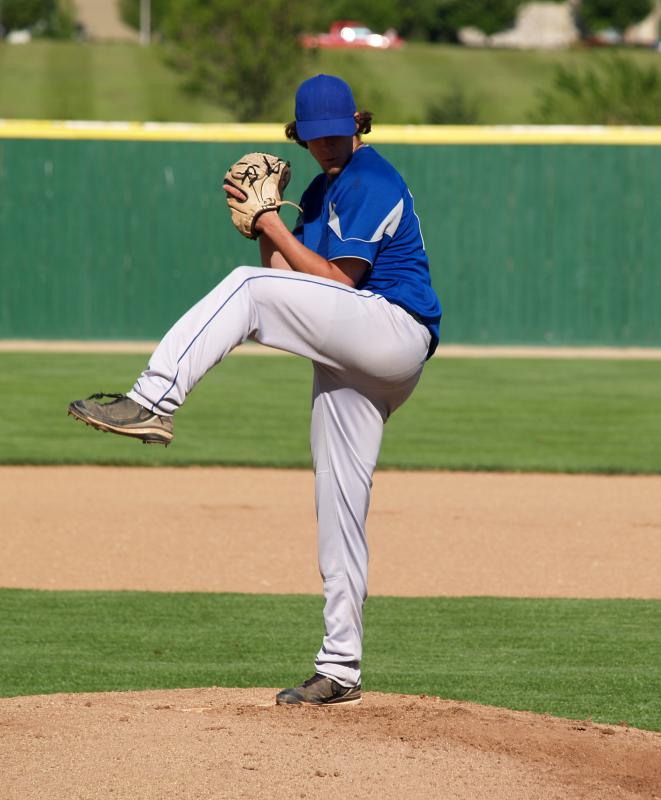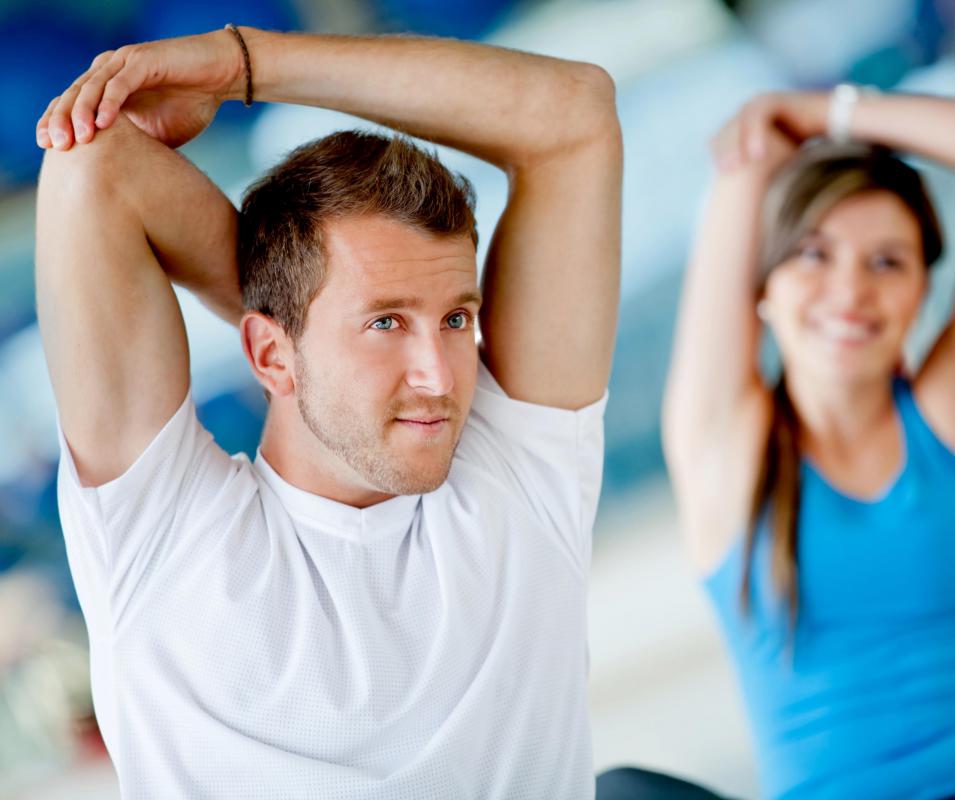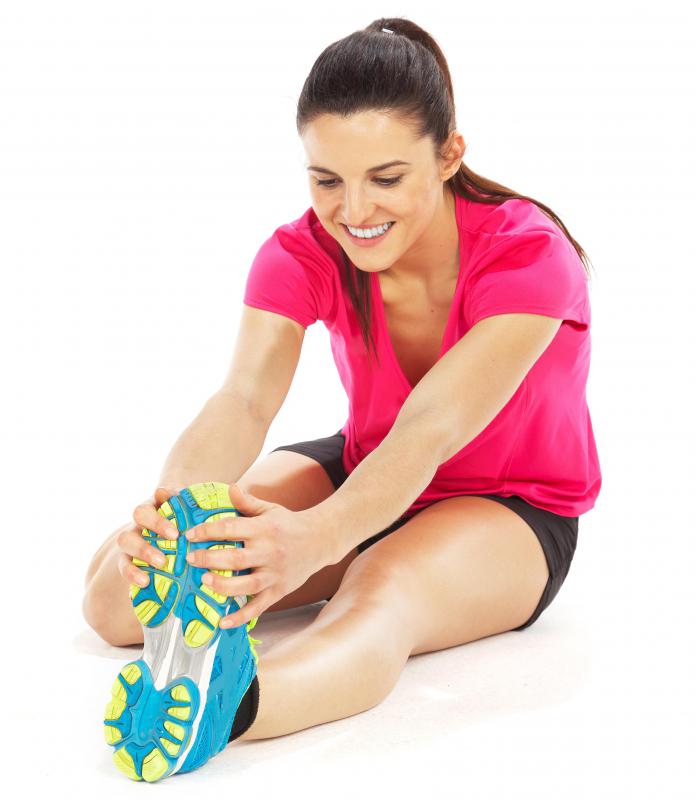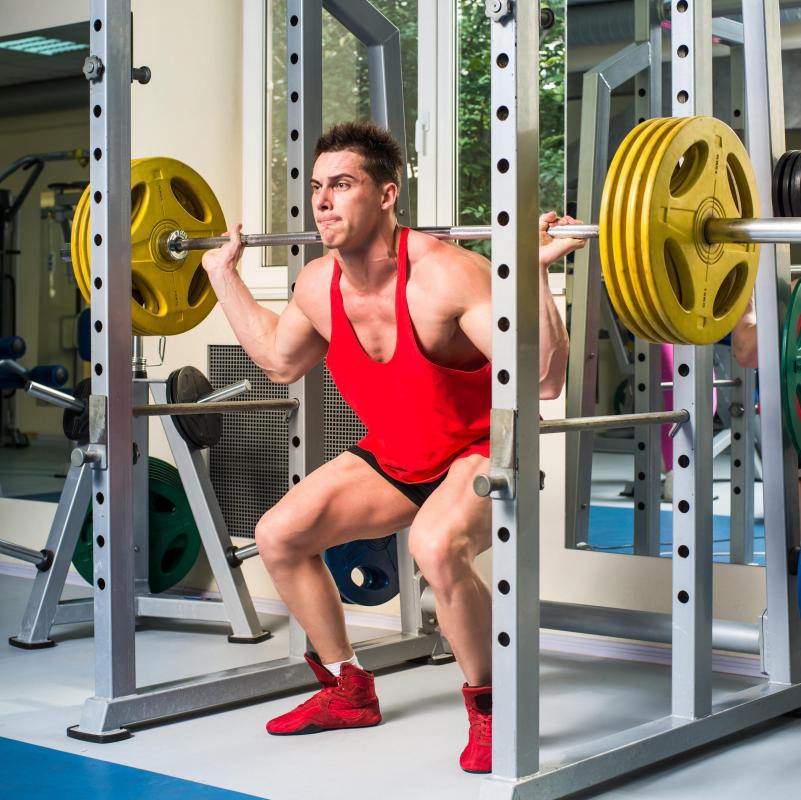At TheHealthBoard, we're committed to delivering accurate, trustworthy information. Our expert-authored content is rigorously fact-checked and sourced from credible authorities. Discover how we uphold the highest standards in providing you with reliable knowledge.
What are the Different Types of Warm up Stretches?
Before exercising, most experts recommend warming up to help get blood flowing to the muscles and to get the body ready for more intense exercise. As part of this, various warm up stretches are often recommended to help loosen muscles which may be tight from inactivity. Warm up stretches generally cover the major muscle groups in the body, but may also sometimes be targeted to certain muscles based on the type of activity a person is about to do. While stretches may vary, there are several basic techniques that are generally recommended for all of them to help avoid injury.
Warm ups generally include both light cardiovascular activity and gentle stretching. Most experts recommend doing five to ten minutes of light activity, such as walking, to help get the blood flowing to the body’s muscles before trying to stretch them. This can help prevent injuries that may be caused by stretching cold muscles too far.

After completing a few minutes of light activity, warm up stretches designed to work the major muscle groups are then generally recommended. This typically includes stretches to target the arms, shoulders, chest, back and legs. For example, a basic warm up stretch routine before walking might include lacing the fingers together and stretching them forward to help stretch out the arms, pulling the arms across the body to stretch the shoulders, bending side to side and front to back to stretch the chest and back muscles, pulling the ankles up and back to stretch the quadriceps, and flexing the feet up to stretch the calves and ankles.

Routines for more intense exercises may target certain muscle groups more thoroughly. For example, running stretches may focus more on the lower body. They may include stretches that target the hips, groin, quadriceps, hamstrings, calves, ankles and feet. Conversely, for an upper body intensive sport, such as baseball, more shoulder, arm and pectoral warm up stretches may be recommended.

In general, experts recommend some of the same basic techniques for warm up stretches regardless of the actual stretch. This includes how long the stretch is held for and the form used. For length, it’s generally recommend that the stretches be held for about 15-30 seconds. In terms of form, it’s generally recommended the muscle be stretched gently so tension is felt, but it’s not painful, and that the stretch be held constantly with no bouncing. These techniques are recommended mainly to help avoid injuries from improper stretching, such as muscle tears.
AS FEATURED ON:
AS FEATURED ON:


















Discussion Comments
I am a visual learner, so I like following either along in a fitness class or a work-out video to get my optimal work-out.
I love that in work-out video's and certain fitness classes they take ample time to warm up and ample time to cool down.
I feel like I am doing stretches wrong unless I have some aid helping me.
It is good to know that you should first warm up your blood before warming up your muscles. From now on I am going to do a light activity like walking before stretching before my actual workout.
@recapitulate- If you are just getting into stretches, a trainer or even a fitness book or magazine can give you some good basic stretches. I also usually don't stretch enough, but after hurting my ankle pretty badly last year, I have been trying harder to think about preventing injury. Another good resource could just be a good friend who does a lot of running, or whatever other exercise you're interested in doing more of.
@vogueknit17- I was told something like that by a track coach in high school. I have exercised pretty regularly for a few years now, but still don't really stretch at all. I think I was so worried about hurting myself while stretching that I decided to nix it all together. I know I need to, though, so maybe I will finally start looking for a good set of basic stretches to fit into my workouts.
It is actually really dangerous to do serious stretching before you exercise; muscles are cold, and that means it is easier for the stretch to go wrong. I run a lot, and I always stretch either at the end of the workout, or halfway through, depending on my distance. In terms of flexibility, injury prevention, and general fitness, the concept of a warm up and cool down, rather than starting hard and stopping abruptly when you're doing aerobic exercise, it way more important and valuable.
I like to exercise with a set of video tapes that I have. Each one of these tapes starts out with some stretching exercises that take about 5 minutes.
I always feel better when I give my muscles a chance to warm up and gradually work in to my routine instead of jumping right in with no warm up.
I have especially noticed that the older I get, the more I seem to appreciate the warm up stretches. When I start, all my muscles seem stiff and tight and I like to make sure I stretch my core which includes some leg and hip stretches.
Making sure my neck is loosened up is also very helpful. I have also found that the more I stretch, the easier it is to stretch and get fully limbered up.
When I first began exercising on a regular basis, I didn't want to take the time for warm up stretches. I was too anxious to begin my workout and felt that stretching was a waste of valuable time.
After learning my lesson the hard way more than once, I now allow myself some time to make sure my muscles are warmed up. I always make sure I stretch my back and legs as these are the areas that seem the most stiff when I get started.
I have also found it is just as important to allow a few minutes for cooling down as it is for stretching. When I look at this time as a part of the whole workout, it helps keep me focused and not so apt to skip such an important part of the whole process.
@KaBoom - Aerial acrobatics? That sounds awesome.
I too have learned the dangers of working out without stretching. I like to jog, and it doesn't seem like you would need to stretch that much before hand. Trust me, you do. You need to stretch as well as do a few other warm ups.
When I first started jogging I didn't really know what I was doing and I would just kind of go out and jog. I ended up with a hamstring injury my doctor said was a direct result of not stretching!
I do aerial acrobatics, which involves me lifting myself up a lot and a lot of flexibility. When I stretch out beforehand, I concentrate on my shoulders a lot.
I actually learned my lesson about this when I first started doing aerials-I wasn't stretching enough and I injured my shoulder. So now I make sure I'm totally warmed up before I start practicing.
I also do a lot of leg stretches as well. Many of the moves I do involve a lot of flexibility, especially the legs.
@letshearit - There are so many stretches for lower back workouts that you a really better off seeing a personal trainer for guidance or getting a good book to walk you through all the lower back exercises. I also get sore backs and found that if I didn't do my stretching correctly it actually made my back hurt more.
I also love to get in some really good hamstring stretches and leg exercises. I find that having a strong base really makes it easier for me to work on my back. My trainer is always teaching me new stretches based off of yoga poses and they have really improved my balance and flexibility.
When I go to the gym I love to do warm up stretches that focus on my core. I do a lot of back exercise because I have an old injury I am trying to overcome. Lower back stretches are one of the best things you can do before exercising your core, as they really prevent you from injuring yourself.
One of the best lower back stretches you can do before your core workout is the simple cat stretch. You just get down on your hands and knees, and arch your back up and down as if you were a cat stretching after a nice long nap. It really works the kinks out of your spine, and I find it relieves pressure on the lower back.
Post your comments